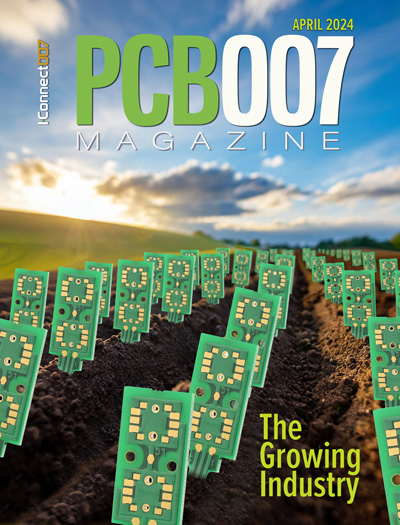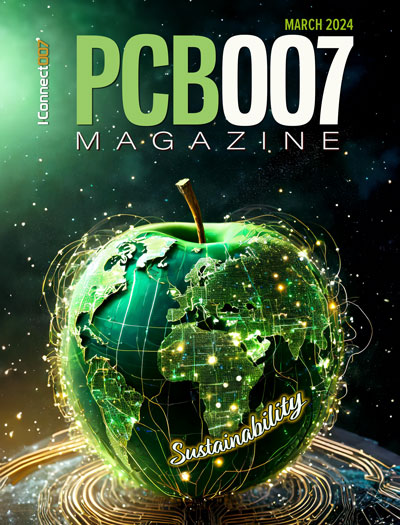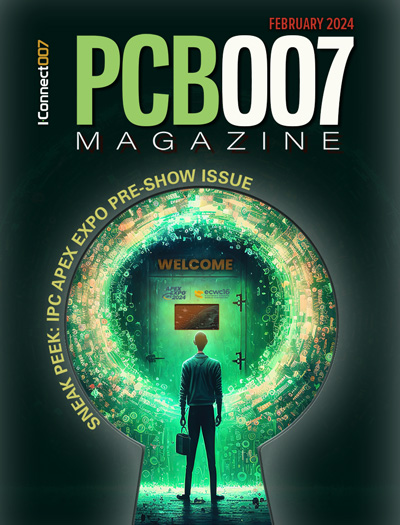-

- News
- Books
Featured Books
- pcb007 Magazine
Latest Issues
Current Issue
The Growing Industry
In this issue of PCB007 Magazine, we talk with leading economic experts, advocacy specialists in Washington, D.C., and PCB company leadership to get a well-rounded picture of what’s happening in the industry today. Don’t miss it.

The Sustainability Issue
Sustainability is one of the most widely used terms in business today, especially for electronics and manufacturing but what does it mean to you? We explore the environmental, business, and economic impacts.

The Fabricator’s Guide to IPC APEX EXPO
This issue previews many of the important events taking place at this year's show and highlights some changes and opportunities. So, buckle up. We are counting down to IPC APEX EXPO 2024.
- Articles
- Columns
Search Console
- Links
- Events
||| MENU - pcb007 Magazine
Rogers Offers Practical Insights into Testing and Using Advanced Circuit Materials at DesignCon 2016
January 6, 2016 | Rogers CorporationEstimated reading time: 3 minutes
Rogers Corporation will be exhibiting and educating at the upcoming DesignCon. Now in its 21st year, DesignCon is a premiere event for design chip-circuit-and system-level engineers working on high-frequency analog and high-speed digital circuits. DesignCon 2016 is scheduled for January 19-21, 2016 (January 20-21 for the exhibition) at the Santa Clara Convention Center (Santa Clara, California).
On the conference side, John Coonrod, Technical Marketing Manager for Rogers Advanced Connectivity Solutions, and author of the popular ROG Blog series, will participate in a 75-minute panel discussion targeting effective measurement methods for high-frequency/high-speed printed-circuit-board (PCB) materials.
This technical presentation will focus, in particular, on frequencies above 10 GHz, as needed for a growing number of applications, including many emerging wireless communications systems. Conducted by the IPC D-24c task group (www.ipc.org) on High Frequency Test Methods, the round-robin-style panel discussion (“Track 05: Characterize PCB Materials and Processing”) will explore the properties of some of the latest circuit materials and examine different methods for testing and characterizing those materials. Joining John Coonrod in the discussion will be Glenn Oliver, Senior Engineer at DuPont, and Don DeGroot, President of CCN.
Also, Dr. Allen F. Horn III will be presenting “Effect of conductor profile structure on propagation in transmission lines” at 9:20 AM on Thursday, January 21 and participating as a member of the August panel discussion “Getting smooth copper and keeping it” at 3:45 PM on Thursday, January 21.
As part of the DesignCon Expo Hall, representatives from Rogers Corp. (www.rogerscorp.com) will be exhibiting at Booth #702, with information and insight on the use of their circuit materials, including ULTRALAM® 3850HT, CLTE-XT™, and RO3003™ laminates. Rogers will also be previewing their new material system developed for ultra low loss digital applications.
ULTRALAM 3850HT high-temperature (HT) liquid-crystal-polymer (LCP) circuit material delivers high yields in multilayer circuits. Its high melt temperature of +330°C improves multilayer layer-to-layer registration and offers improved thermal stability, while its low effective dielectric constant (3.14 @10GHz), low loss (0.002), and thin core offerings make it an ideal circuit material for millimeter frequencies, including 77 GHz used in long range automotive collision-avoidance radar systems. Being highly impermeable, it is an attractive alternative to ceramic for MMIC (monolithic microwave integrated circuit) packaging.
Page 1 of 2
Suggested Items
Insulectro’s 'Storekeepers' Extend Their Welcome to Technology Village at IPC APEX EXPO
04/03/2024 | InsulectroInsulectro, the largest distributor of materials for use in the manufacture of PCBs and printed electronics, welcomes attendees to its TECHNOLOGY VILLAGE during this year’s IPC APEX EXPO at the Anaheim Convention Center, April 9-11, 2024.
ENNOVI Introduces a New Flexible Circuit Production Process for Low Voltage Connectivity in EV Battery Cell Contacting Systems
04/03/2024 | PRNewswireENNOVI, a mobility electrification solutions partner, introduces a more advanced and sustainable way of producing flexible circuits for low voltage signals in electric vehicle (EV) battery cell contacting systems.
Heavy Copper PCBs: Bridging the Gap Between Design and Fabrication, Part 1
04/01/2024 | Yash Sutariya, Saturn Electronics ServicesThey call me Sparky. This is due to my talent for getting shocked by a variety of voltages and because I cannot seem to keep my hands out of power control cabinets. While I do not have the time to throw the knife switch to the off position, that doesn’t stop me from sticking screwdrivers into the fuse boxes. In all honesty, I’m lucky to be alive. Fortunately, I also have a talent for building high-voltage heavy copper circuit boards. Since this is where I spend most of my time, I can guide you through some potential design for manufacturability (DFM) hazards you may encounter with heavy copper design.
Trouble in Your Tank: Supporting IC Substrates and Advanced Packaging, Part 5
03/19/2024 | Michael Carano -- Column: Trouble in Your TankDirect metallization systems based on conductive graphite or carbon dispersion are quickly gaining acceptance worldwide. Indeed, the environmental and productivity gains one can achieve with these processes are outstanding. In today’s highly competitive and litigious environment, direct metallization reduces costs associated with compliance, waste treatment, and legal issues related to chemical exposure. What makes these processes leaders in the direct metallization space?
AT&S Shines with Purest Copper on World Recycling Day
03/18/2024 | AT&SThe Styrian microelectronics specialist AT&S is taking World Recycling Day as an opportunity to review the progress that has been made in recent months at its sites around the world in terms of the efficient use of resources:


